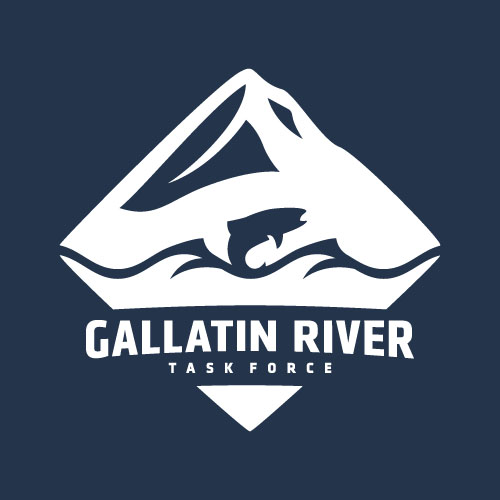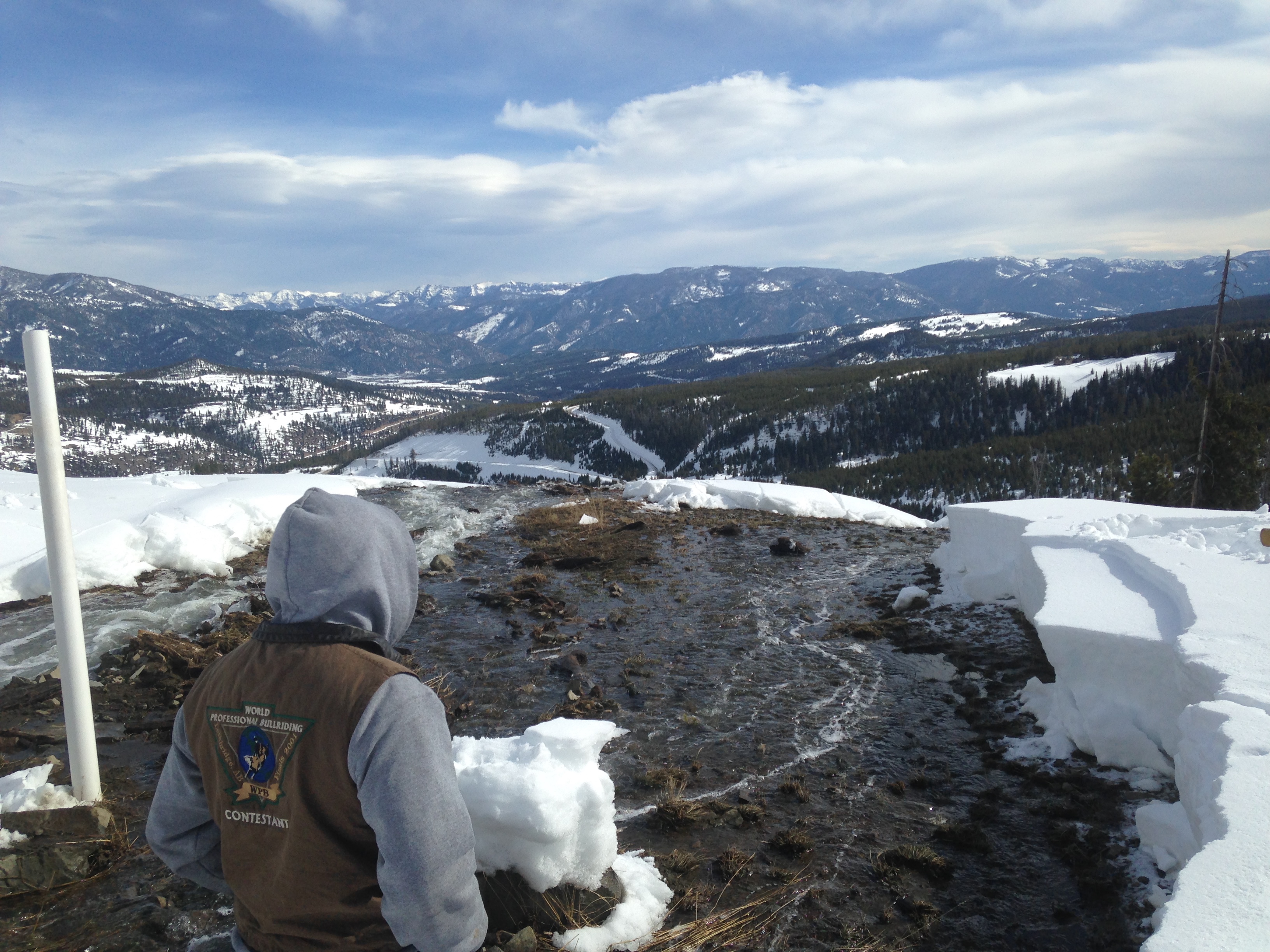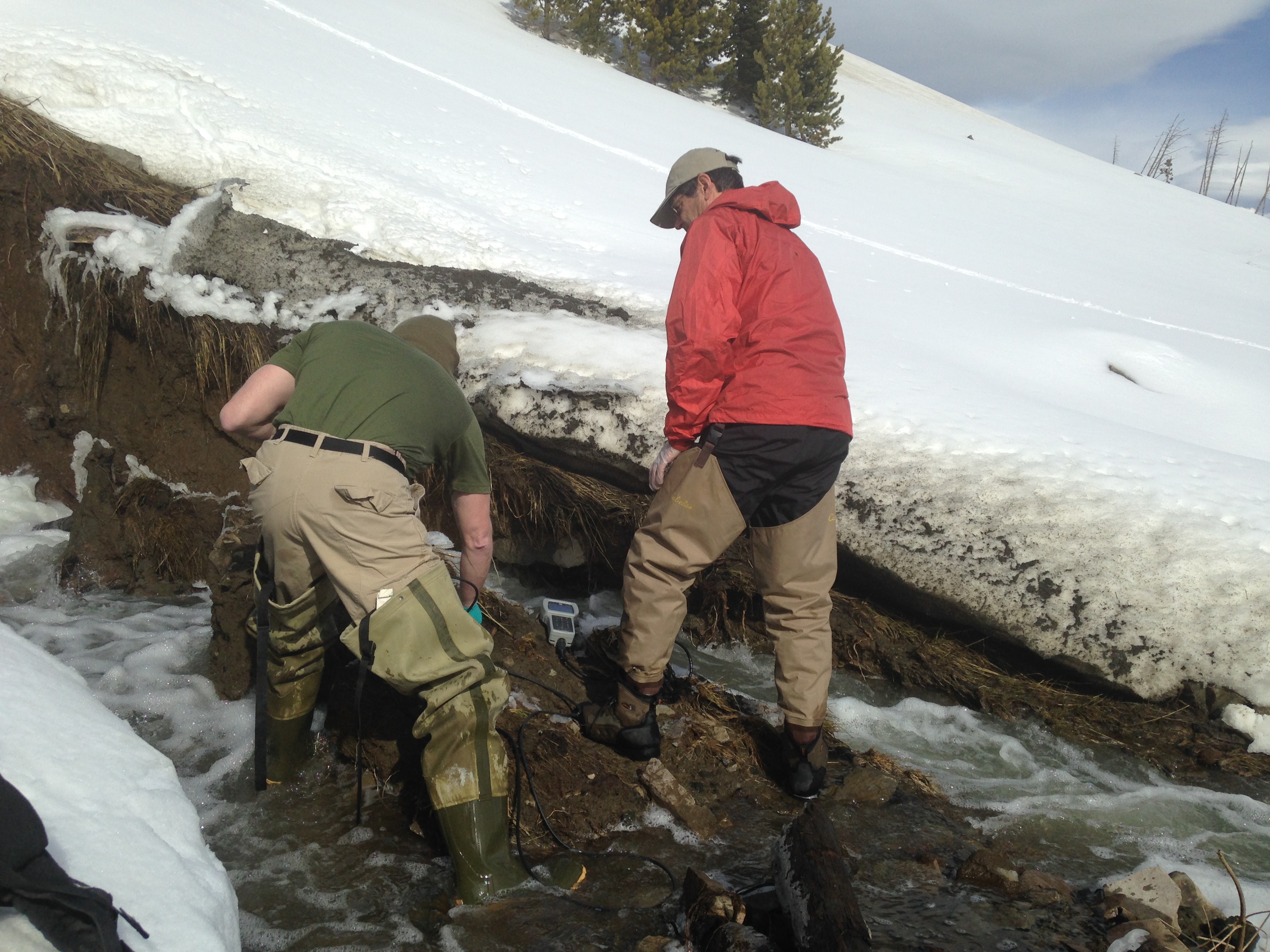On Thursday, March 3rd, a treated reclaimed wastewater main on Yellowstone Club property was damaged, spilling tertiary treated wastewater into the Second Yellow Mule drainage, and subsequently the Gallatin River. The wastewater was flowing from a storage pond on Yellowstone Club property filled with approximately 35 million gallons of water (30 million gallons from the Big Sky Water & Sewer District and 5 gallons from the Yellowstone Club). There is no immediate risk to human health. The biggest concerns for aquatic life are: sediment carried from the steep slopes near the spill site and chloride from chlorine used to treat the water, particularly in the smaller streams.
At the Gallatin River Task Force, it is our mission to provide timely, scientifically accurate water quality information to the general public. We will use this web page to publish frequent updates as we monitor and assess the aftermath of the wastewater effluent spill on Yellowstone Club property.
But first, a recap:
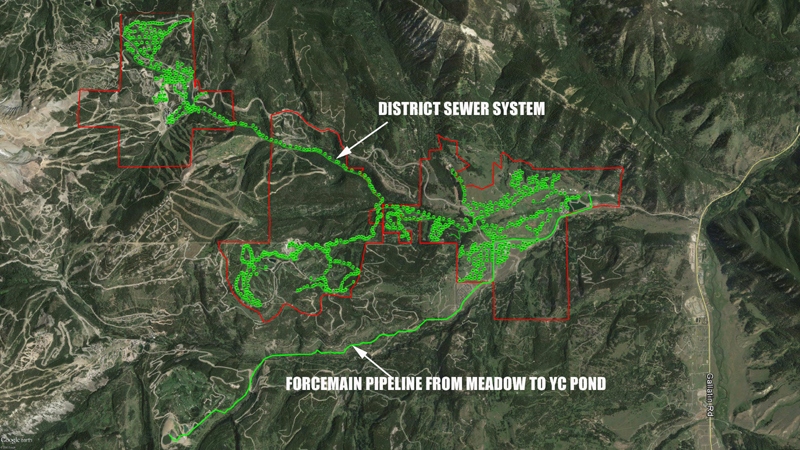
Map showing the Big Sky Water & Sewer District Boundary (red) , District sewer system (green), and forcemain pipe that runs from the ponds in the Meadow Village to the Yellowstone Club. A forcemain is a term for a pipe where pumps or pressure are necessary to make water flow. Map courtesy of the Big Sky Water and Sewer District.
Thursday, March 3, 2016 – Day 1
5:00 AM to 6:00 AM – Estimated time that pipe failure occurred. This time was estimated by working backward from changes in water quality recorded by the Gallatin River Task Force continuous monitoring station on the South Fork of the West Fork of the Gallatin River (South Fork).
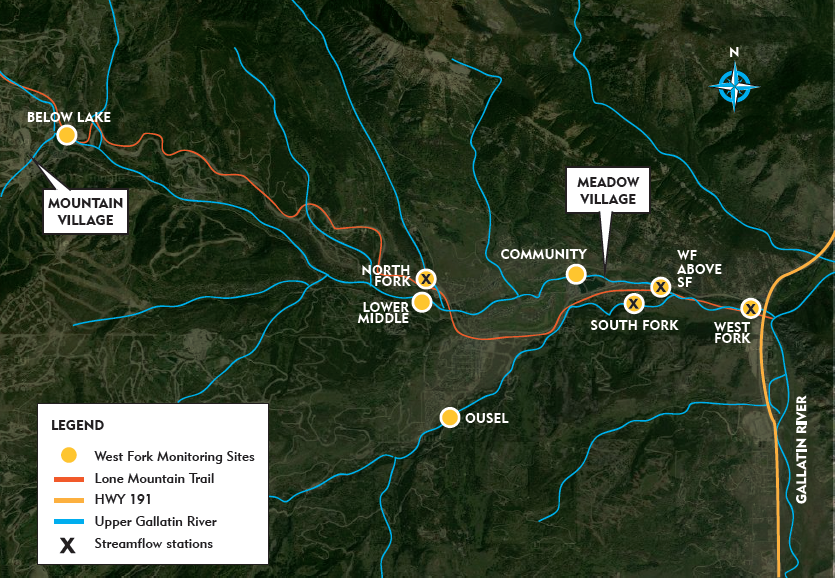
Gallatin River Task Force monitoring sites in the West Fork Watershed (yellow circle) and streamflow stations (black “x’s”).
7:00 AM – The Gallatin River Task Force South Fork continuous monitoring station registers an increase in specific conductance. Specific conductance is a measure of the ability of water to carry an electrical current. Pure water is not an effective conductor of electricity; however, specific conductance increases with the amount of charged particles suspended in water. Conductivity naturally varies with precipitation, temperature, geology, and proximity to the ocean. In this case, sediment, eroded from the steep slopes near the outfall and carried to the South Fork, caused specific conductance to rapidly increase.

Specific conductance (mS/cm) from the Gallatin River Task Force South Fork Continuous Monitoring Station. Specific conductance began to increase at 7:00 AM on March 3rd due to an increase in stream load sediment.
2:00 PM – The Yellowstone Club notified the Big Sky Water & Sewer District, Montana Department of Environmental Quality, and the Gallatin River Task Force. Water & Sewer District staff mobilized to assess the situation. Wastewater inputs from the Big Sky Water & Sewer District and the Yellowstone Club ceased.
6:00 PM – Yellowstone Club press release:
On March 3rd, a Yellowstone Club team member identified damage to a treated reclaim water irrigation main. The team member did a great job and notified us immediately. We moved swiftly to address the incident as soon as it was known, contacting Big Sky Water and Sewer District and environmental authorities including the Montana Department of Environmental Quality. Local authorities confirmed that there is a flow of the reclaimed water into surrounding area streams and ultimately the Second Yellow Mule Creek and the Gallatin River. The water that is influencing the Second Yellow Mule drainage. There are no homes or structures in the flow path. The broken pipe is flowing rapidly and picking up sediment due to overland flow and the steep land topography causing soil turbidity in the connecting waterways. The water is treated to a high level and not a risk to human contact. Furthermore there are no potable inlets for consumption along these waterways.
Yellowstone Club knows it is our responsibility to ensure as little harm as possible to the environment and we must do all we can to mitigate this issue. Crews from Bozeman are working through the day assembling parts and equipment to remedy the situation. It is estimated that the active spill will be contained within 24 hours pending the ultimate repair required. Yellowstone Club wants to assure the community we take this issue very seriously and we are taking steps to minimize this impact and prevent any further issues. We will keep you updated on this situation.
Friday, March 4th – Day 2
7:00 AM – Contractors from Bozeman arrive to assess the situation and sample the wastewater pond.
8:00 AM – The Gallatin River Task Force, Yellowstone Club, and Confluence Consulting, Inc. collaborate on a monitoring plan for the wastewater pond outfall, Second Yellow Mule, First Yellow Mule, South Fork, West Fork, and Gallatin River. Monitoring will continue until the watershed has returned to baseline conditions. For more information on baseline for the Upper Gallatin, check out the 2015 Upper Gallatin River Watershed Water Quality Monitoring Report.
12:00 PM – The Montana Department of Environmental Quality (DEQ) director and representatives arrive in Big Sky. They assess the wastewater pond and monitor outfall. Work begins to divert wastewater effluent to a freshwater pond on Yellowstone Club property.
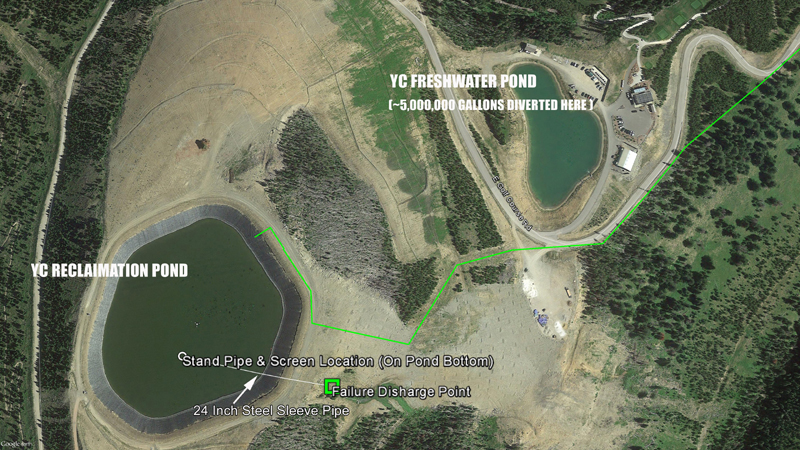
Aerial image courtesy of the Big Sky Water & Sewer District showing the location of the two Yellowstone Club ponds and the pipe failure.
4:30 PM – The Gallatin River Task Force and Confluence Consulting, Inc. begin formal monitoring.
5:30 PM – Public meeting held at the Big Sky fire station with Fire Chief Bill Farhat, District Manager Ron Edwards, YC Vice President of Development Mike DuCuennois, and DEQ Director Tom Livers. Representatives from Montanan Fish Wildlife and Parks, and the Gallatin River Task Force as well as the press and 50-60 community members were present. At that time, damage to the steel pipe and associated screen was thought to be caused by ice.
Saturday, March 5th – Day 3
The Montana Department of Environmental Quality sends in an incident team. They establish a monitoring plan for the Yellowstone Club, South Fork, and Gallatin River and spend the afternoon sampling.
The Gallatin River Task Force and Confluence Consulting, Inc. monitor the wastewater pond outfall, Second Yellow Mule Creek, First Yellow Mule Creek, South Fork, West Fork, and Gallatin River. Check back soon for preliminary results!
- Mark and Jim, Confluence Consulting, Inc., sampling the wastewater pond outfall Notice the relatively clear water at the outfall.
- Elijah looking into turbid (sediment-filled) water at the confluence with the West Fork.
To learn more about the Big Sky Water and Sewer District’s response, visit their website.
